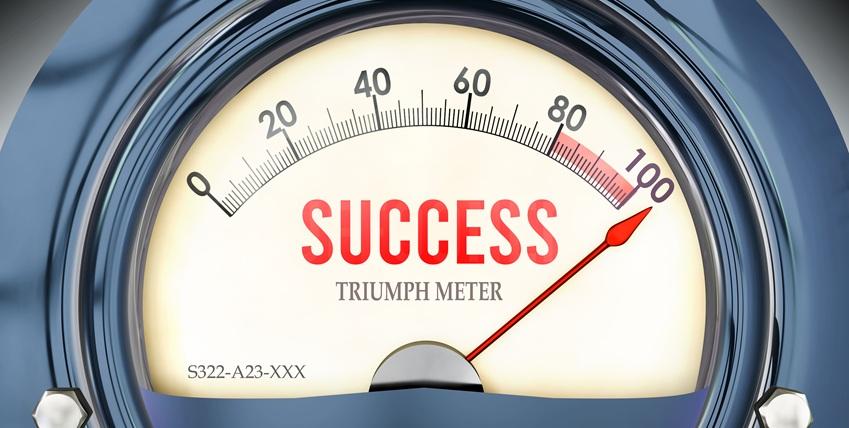How to tell if your proposal win rate is too high
5 things it can mean, 4 questions to ask yourself, 6 ways to strike the right balance, 7 ways to improve ROI, and 4 things you shouldn't do
That’s not a typo. I said how to tell if your win rate is too high. I obsess over improving win rates. I do everything possible to increase them. And yes, it is possible for them to get too high.
The highest sustained win rate I’ve seen a contractor have was 87%. It was a company that had a huge software advantage in a tiny niche with repeat customers. And they stayed in it. They had discipline. They did not bid things at a disadvantage.
Their win rate was too high. It limited their growth. They weren’t prepared for a future where other companies could match their software. Or when their limited set of customers changed. But they were comfortable, even though they weren’t maximizing their potential. For a while.
When your win rate is too high, it can mean:
- You are staying within your comfort zone and missing out on potential growth opportunities. You may not be maximizing your potential revenue because you are not exploring new areas.
- You have all of your eggs in one basket. What if it gets dropped?
- You think you have cracked the code on a successful strategy, but really you’re just forming a habit.
- You are vulnerable to new technologies and approaches. You may have been the original innovator, but if you drop your guard, in time you can become the one who is obsolete. The tech world if full of cutting-edge companies that became obsolete.
- You have too many possible points of failure and the risk increases over time, making it just a matter of time.
How do you know if your win rate is too high?
This is challenging because it depends on a lot of variables, and they are often compounded. If your win rate is high, you should ask yourself if it is high because you:
- Have too few customers?
- Have stopped seeking new customers?
- Are not innovating, developing new capabilities, seeking new differentiators, or exploring new technologies?
- Are not experimenting with bidding outside your comfort zone?
Many of the things that can result in having a win rate that is too high require finding the right balance. The problem is that the right balance is different for each company.
Do you have the right balance between:
- High win probability bidding vs. exploratory bidding?
- Current customers vs. new customers?
- Staying comfortable today vs. preparing for an uncertain future?
- Meeting your revenue needs today vs. growing?
- Growing cautiously vs. growing quickly?
- Bidding where you are strong vs. developing new capabilities?
When your win rate is high but you have concerns about the future, it’s time to invest. You might invest in:
- Gaining new customers
- Opening new markets or territories
- Developing new competencies or technologies
- More extensive strategic planning
Pursuing new and less familiar opportunities will lower your win rate. But as you gain familiarity, your win rate should come up.
You might also invest in improving:
- Your processes. Strategic planning, prospecting, lead qualification, capture, and proposal processes can all always be improved. The best way to reduce the cost of breaking into a new market is to be deliberate, methodical, and efficient about it.
- Improving your awareness and insight. Which new customers, markets, or technologies should you consider? If you have to guess, it’s because you don’t have sufficient awareness or insight.
- The information you track and what you do with it. It’s a good idea to be able to segment your win rate by current customers and new customers. There are many other ways to segment your win rate to improve your assessment of the potential ROI of a decision. If you don’t anticipate what you will need, it will be difficult and time consuming to find, structure, and analyze the data needed to make informed decisions.
Some things you don’t want to do
Intentionally lowering your win rate, should be done with great care. You don’t want something that you do knowing it will reduce your short-term ROI to become a permanent drag on your ROI. To avoid this you should NOT:
- Bid when you have no customer awareness. Exploratory bidding and breaking into new customers require research and preparation. Bidding blind isn’t exploring, it’s gambling.
- Fail to have written lead qualification criteria and regularly reexamine them. You can make them more or less strict. You can modulate your win rate up or down by using them. But you must have written lead qualification criteria to do this.
- Fail to have regular strategic planning. Your strategic planning efforts should address growing your current business and where you want to invest to find and develop new business. Strategic planning is where you align your tolerance for risk with your opportunities for growth. This balance needs to be thought through and regularly reexamined.
- Stop trying to increase your win rate. If your win rate declines because you are trying to break into a new territory, line of business, or customer, that’s to be expected. It should be monitored and deliberate. However, if your win rate is too high and you bring it down by no longer trying to improve it, that’s not good at all. That’s how you turn a good win rate into a bad one that stays bad.
It's all about ROI
Whether you keep your high win rate or allow a reduction to it by investing in less familiar business, it’s all about ROI. Pursuing work at a lower win rate, can have a positive impact on your ROI. It may not be as profitable as your current work, but it can still be profitable. It can generate additional growth. And growth is the source of all opportunity within a company.
I have seen consultants claim higher win rates, but those are always cherry-picked numbers. I consider them to be misleading. Watch this… I have a customer I’ve had for 25 years. With that customer I have a 100% win rate. What I didn’t tell you is that they only have one contract, and they’ve won four recompetes in a row because they are innovative and have created a technology advantage. I mostly make sure they don’t lose. They are the real winners.
Access to premium content items is limited to PropLIBRARY Subscribers
A subscription to PropLIBRARY unlocks hundreds of premium content items including recipes, forms, checklists, and more to make it easy to turn our recommendations into winning proposals. Subscribers can also use MustWin Now, our online proposal content planning tool.
Carl Dickson
Carl is the Founder and President of CapturePlanning.com and PropLIBRARY
Carl is an expert at winning in writing, with more than 30 year's experience. He's written multiple books and published over a thousand articles that have helped millions of people develop business and write better proposals. Carl is also a frequent speaker, trainer, and consultant and can be reached at carl.dickson@captureplanning.com. To find out more about him, you can also connect with Carl on LinkedIn.


